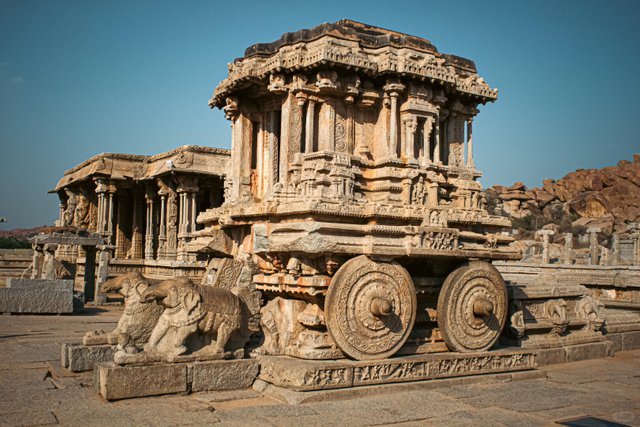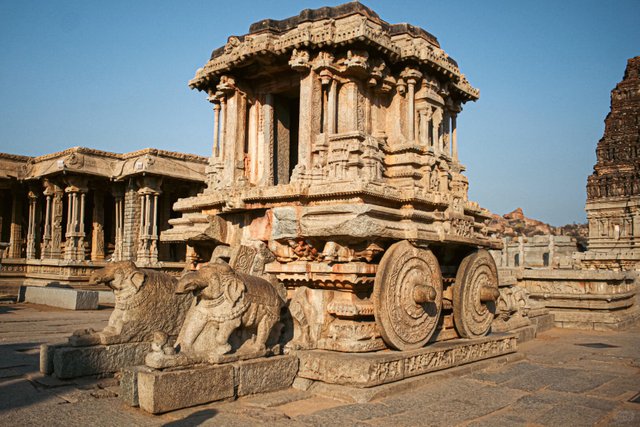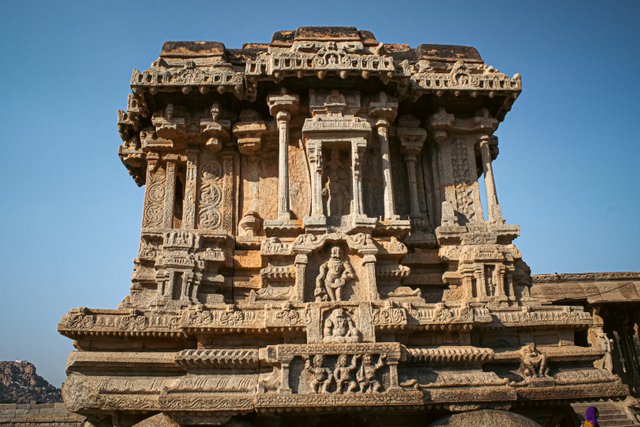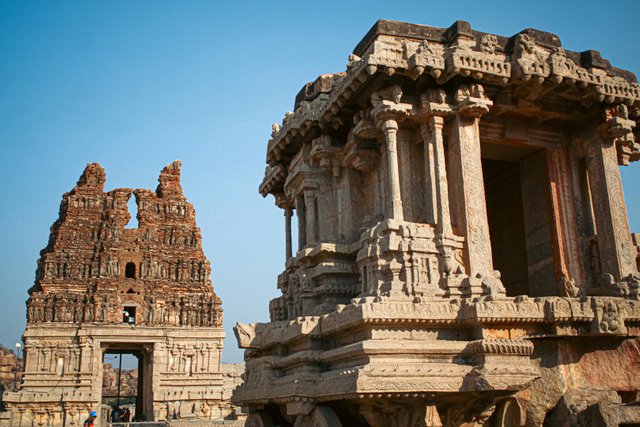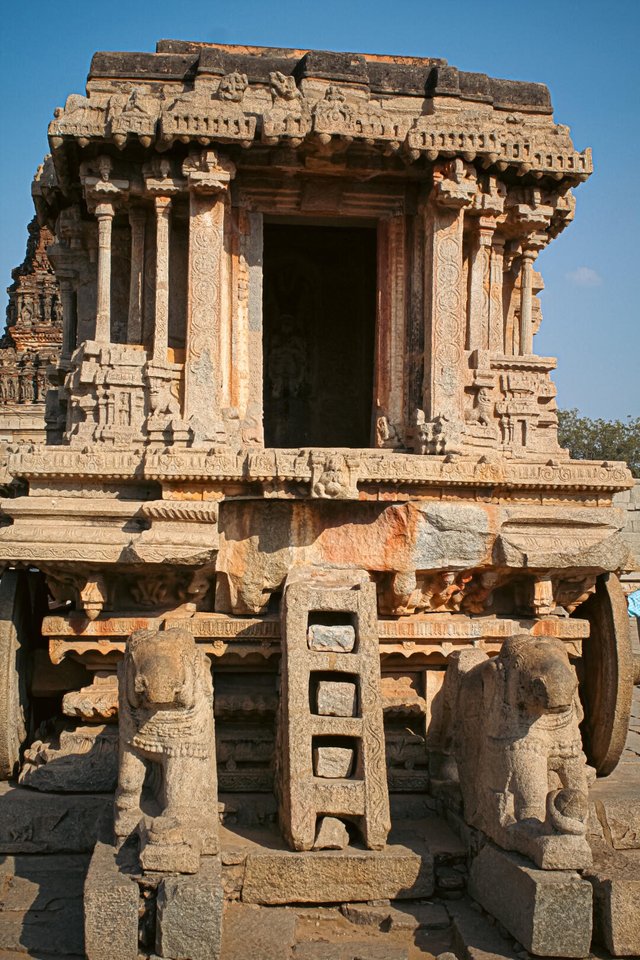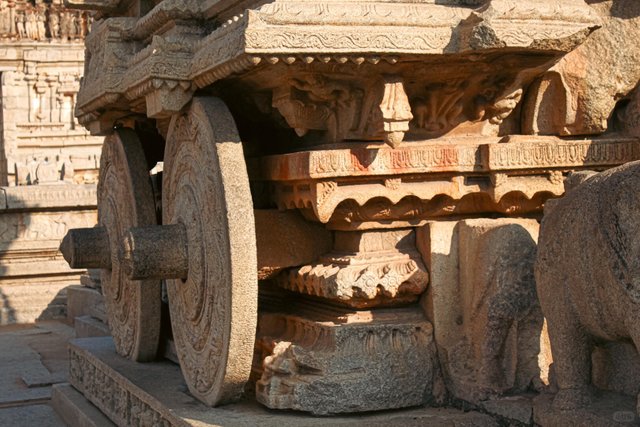It never moves, yet it seems capable of sailing to another world.
It is one of the most stunning structures I have ever seen in southern India.
It is not a royal palace, nor a fortress,
but a temple carved in the shape of a "chariot".
It rests quietly in front of the temple in the wilderness,
as if ready to drive to the realm of the gods at any moment.
It is the iconic landmark of Hampi ——
the Stone Chariot,
located in the square in front of the Vittala Temple.
⸻
🛕 History
• Construction period: Around the mid-16th century, during the heyday of the Vijayanagara Empire
• Purpose: Built to enshrine Garuda, the divine bird and mount of Vishnu, serving as an altar structure that is a "temple within a temple"
• Religious background: Hindu Vaishnavism; the entire temple complex is dedicated to Vishnu
• Current status: Part of the Hampi World Heritage Site and featured on India's 50-rupee banknote
🔱 Who is Garuda? Why is he worthy of a chariot temple?
Garuda is the divine bird mount of Vishnu in Hinduism, symbolizing speed, holiness, and divine majesty. The Stone Chariot Temple is actually a divine chariot altar built for him — a "temple within a temple" dedicated to the mount of the heavenly realm.
🕊 In Buddhism, he is known as "Garuda" and, along with yakshas, asuras, etc., is listed among the Eight Heavenly Generals, serving as one of the guardians of the heavenly realm.
🕯 In Tibetan Buddhism, Garuda is called "Khyung" (ཁྱུང་), a giant golden-winged divine bird often depicted in murals and decorations.
📜 In Chinese Buddhist scriptures, Garuda is often translated as "the great roc golden-winged bird", whose image highly coincides with the divine birds in Chinese mythology.
🪨 Craftsmanship
• The entire chariot is carved from granite, with craftsmanship so delicate it resembles woodwork
• The wheels were originally rotatable but are now fixed for preservation
• The current stone elephants are later restorations; the original statues pulling the chariot were horses
• Each side is adorned with rich relief details: divine totems, lotus-shaped canopies, wheel axle patterns, etc., with almost no repetition
• Together with the "musical stone pillars" of the main hall (which emit musical scales when struck), they form the architectural wonders of the Vittala Temple complex
⸻
We strive to build cities and steel structures,
yet in the end, what remains after a thousand years,
are still these silent stones.
So, what are we rushing for?
